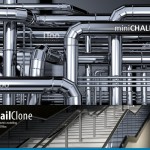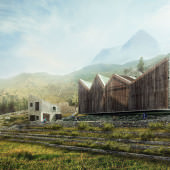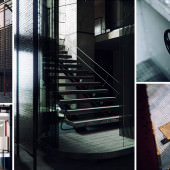3 RailClone Parquet Floor Tutorials
In their continuous effort to make the use of RailClone as easy as possible, Long time blog & challenges sponsor, iToo Software, created 3 short how-to tutorials that showcase how RailClone can act as a Floor Generator.
These quick-tip tutorial explains how to model parquet floors from individual planks using RailClone 2.1. The 2D array generator provides an excellent way to create a wide variety of floor patterns using only a single enclosed spline to define the boundary. Many patterns of parquet can easily be created with minimal effort using RailClone’s parametric pattern based approach to modelling. Because RailClone uses the renderer’s native geometry shaders to create instances on the fly, large areas can be created without significant increases in memory consumption or render time.
The 3 videos shows how to use these pre-made plank models with RailClone’s node based editor to create complete parametric wood floors, starting with the most basic Strip layout and advancing to more complicated Chevron & Herringbone formations. This method can be adapted to other layout obviously.
Strip :
Chevron :
Herringbone :
Go ahead and check the RailClone Parquet Floor Tutorials page now…
The files that come with this series are compatible with 3DS Max 2010 – 2013, and RailClone Pro 2.1.
Make sure you check the readme file that comes with this scene for the terms of use.
These tutorials have been realized by Paul Roberts for iToo Software. Paul is a 3DS Max generalist with over 10 years of experience, lecturer for the last 6, and editor at Max Underground. Based in the UK, he specialises in game environments and architectural visualisation alongside teaching. Paul can be contacted at paul@lonelymonk.com or followed on twitter @lonelymonk.






















nice
The images for Herringbone and Strip are switched..